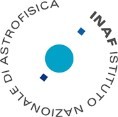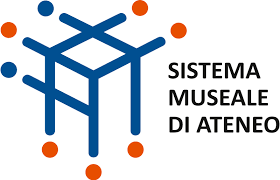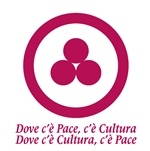Una vita tra le stelle - A life among the stars
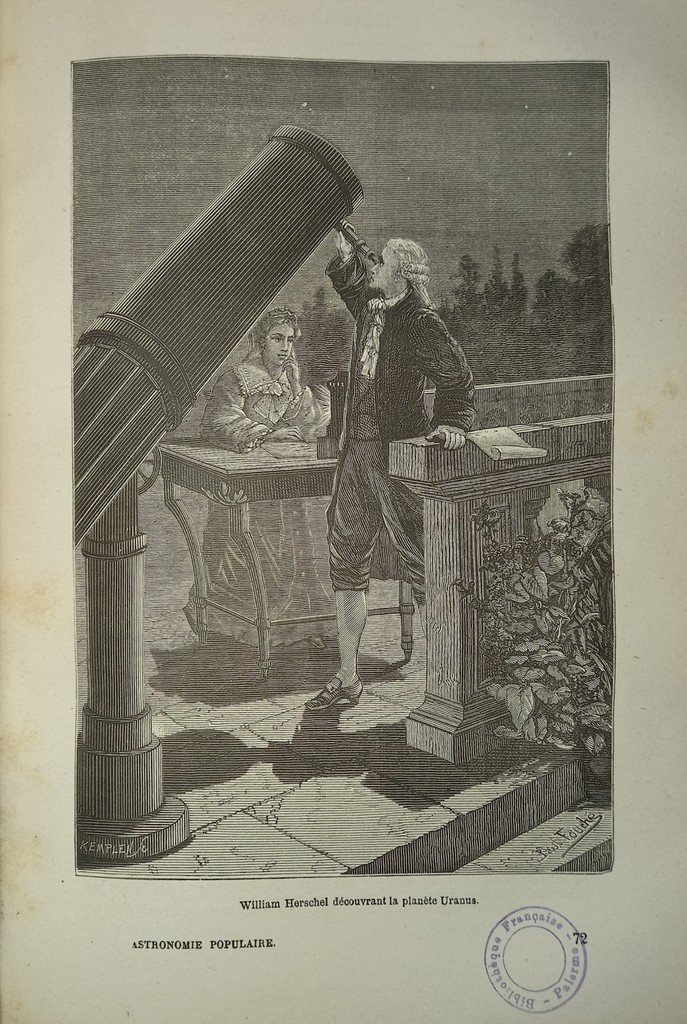
William e Caroline Herschel alla scoperta del pianeta Urano.
Incisione contenuta in C. Flammarion, Astronomie populaire, Paris, 1881.
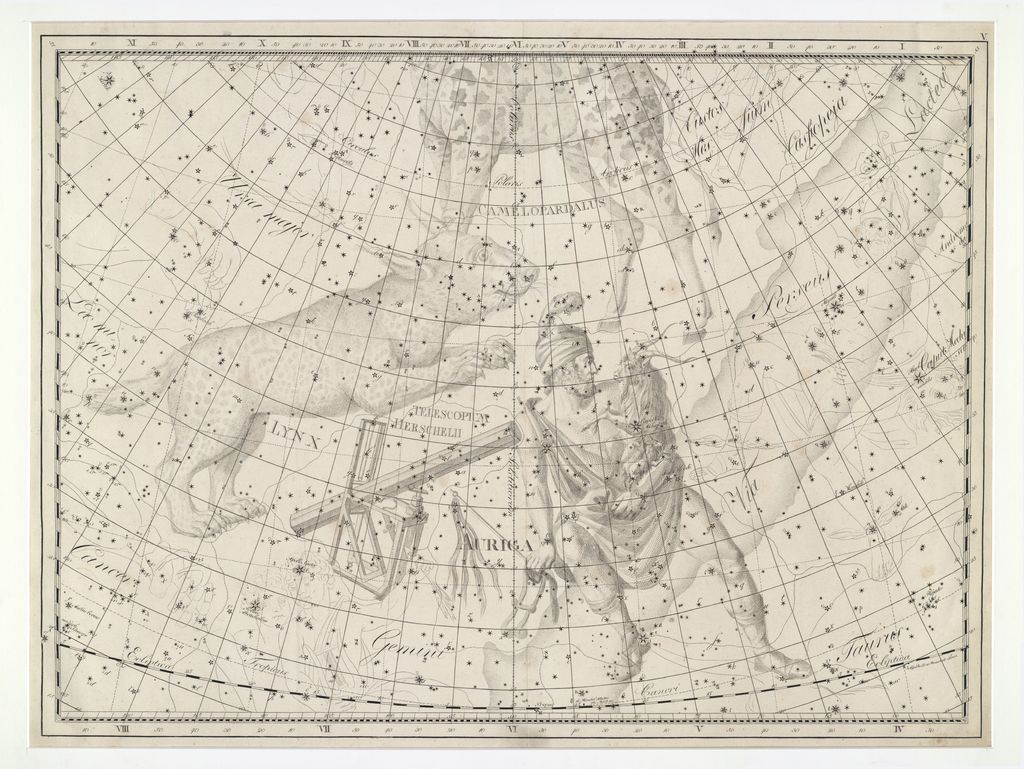
Il telescopio di Herschel raffigurato, insieme alle maggiori invenzioni dell'epoca, nell'atlante celeste di Bode.
J. E. Bode, Uranographia sive Astrorum descriptio, Berolini, 1801, Tavola V.
Nato il 15 novembre nel 1738 ad Hannover, in Sassonia, Frederick William Herschel era figlio di un musicista della fanteria della città, che gli trasmise l’amore per la musica. Nel 1757, a 19 anni, si trasferì a Bath, in Inghilterra, con uno dei nove fratelli, dove intraprese la carriera musicale distinguendosi come solista e come insegnante, per poi essere nominato organista ad Halifax. Parallelamente a questo interesse, Herschel coltivò anche una grande passione per l’astronomia. Mosso dall’interesse per la volta celeste, cominciò non soltanto a studiarne gli oggetti ma anche a muovere i primi passi nella costruzione di telescopi. In ciò si rivelò così abile che i suoi strumenti ebbero larga diffusione nei più importanti Osservatori dell’epoca e l'astronomo tedesco Johann Elert Bode, all’interno della sua Uranographia (1801), ne inserì una raffigurazione, che troviamo nella tavola V dell’atlante, accompagnata dalle parole “Telescopium Herschelii”. Per gli ottimi risultati ottenuti nella scienza astronomica e per la scoperta del pianeta Urano (vd. sessione successiva della mostra), nel 1781 ricevette da re Giorgio III un prestigioso riconoscimento che gli consentì di approfondire i suoi studi e di andare a vivere a Windsor. Pochi anni dopo, nel 1786, Herschel si trasferì a Slough, nel Berkshire, a poche decine di chilometri da Londra, dove abitò fino alla morte, avvenuta il 25 agosto 1822. Nella nuova dimora, che l’astronomo dotò di una specola privata, continuò a dedicarsi allo studio della Via Lattea, realizzando il primo modello del suo sistema stellare, delle nebulose, dalla cui condensazione deriverebbero le stelle, degli ammassi stellari, dei sistemi di stelle doppie, di cui dimostrò l’esistenza, dei raggi infrarossi, scoperti proprio da Herschel, dei pianeti e dei loro satelliti, scoprendo due satelliti di Saturno e due satelliti di Urano grazie al potente telescopio a specchio di sua invenzione. Ad Herschel, inoltre, si deve la geniale intuizione dell’identificazione di una nuova classe di oggetti celesti, cui diede il nome di “asteroidi”, scaturita dall’analisi di Cerere e Pallade, scoperti pochi mesi prima rispettivamente da Giuseppe Piazzi e da Heinrich Wilhelm Olbers. Nel suo lavoro fu spesso accompagnato dalla sorella Caroline (1750-1848), che con William condivideva entrambe le passioni: quella per la musica, che la portò a diventare una cantante lirica, e quella per l’astronomia. Caroline, infatti, si distinse in questo campo tanto che, per il suo contributo nella scienza del cielo e per la scoperta di sei comete, nel 1835 fu nominata membro onorario della Royal Astronomical Society. Caroline non fu l’unico familiare di William ad eccellere in astronomia: anche il figlio John (1792-1871), infatti, si dedicò a tale disciplina scientifica divenendo, nel 1848, presidente della Royal Astronomical Society.
_____________________________________________________________________________________________________

William and Caroline Herschel discover the planet Uranus.
Engraving in C. Flammarion, Astronomie populaire, Paris, 1881.

The Herschel telescope depicted, together with the major inventions of the time, in Bode's celestial atlas.
J. E. Bode, Uranographia sive Astrorum descriptio, Berolini, 1801, Plate V.
Born on November 15, 1738 in Hanover (Saxony), Frederick William Herschel was the son of an infantry musician in the city, from which he inherited the love for music. In 1757, at the age of 19, he moved to Bath (England) with one of his nine brothers, where he undertook the musical career distinguishing himself as a soloist and as a teacher, before being appointed organist in Halifax. At the same time, Herschel also cultivated a great passion for astronomy. Moved by an interest in the celestial vault, he began not only to study its objects but also to take his first steps in the construction of telescopes. He proved to be so skilled that his instruments were widely distributed in the most important Observatories of the time. Furthermore, the German astronomer Johann Elert Bode, in his Uranographia (1801), inserted a representation of them, which we find in table V of the atlas, accompanied by the words “Telescopium Herschelii”. For the excellent results achieved in astronomical science and for the discovery of the planet Uranus (see next session of the exhibition), in 1781 he received a prestigious award from King George III which allowed him to deepen his studies and to live in Windsor. A few years later, in 1786, Herschel moved to Slough (Berkshire), a few tens of kilometers from London, where he lived until his death on 25 August 1822. In the new home, which the astronomer equipped with a private observatory, he continued to study the Milky Way (creating the first model of its star system), nebulae (from whose condensation the stars would derive), star clusters, systems of double stars (of which he proved the existence), infrared rays (discovered by Herschel), the planets and their satellites (discovering two satellites of Saturn and two satellites of Uranus thanks to the powerful mirror telescope of his invention). Furthermore, Herschel had the brilliant intuition of identifying a new class of celestial objects, to which he gave the name of "asteroids", resulting from the analysis of Ceres and Pallas, discovered a few months earlier by Joseph Piazzi and Heinrich Wilhelm Olbers respectively. In his work he was often accompanied by his sister Caroline (1750-1848), who shared both passions with William: for music and for astronomy. Carole, indeed, became an opera singer and, thanks to her contribution in the science of the sky and the discovery of six comets, in 1835 she was made an honorary member of the Royal Astronomical Society. Later, William's son, John (1792-1871), also devoted himself to this scientific discipline becoming president of the Royal Astronomical Society in 1848.


